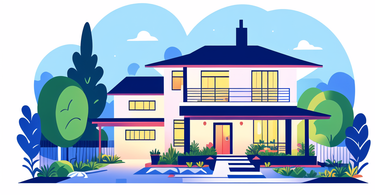Understanding the Importance of Garden Fence Lighting
Exploring the Aesthetic and Functional Benefits
Garden fence lighting is more than just a decorative feature. It adds charm and appeal to your outdoor space. Proper lighting can transform a dull fence into a stunning focal point. It creates a warm and inviting atmosphere for evening gatherings.

Functionally, fence lighting improves safety and security. It helps you navigate your garden at night with ease. Well-lit fences deter intruders and unwanted wildlife. They also highlight potential hazards, preventing accidents.
Fence lighting extends the usability of your outdoor space. It allows you to enjoy your garden well into the evening hours. This is perfect for summer barbecues or quiet nights stargazing.
The Impact of Lighting on Property Value
Well-designed garden fence lighting can significantly boost your property's value. It enhances curb appeal, making your home more attractive to potential buyers. A beautifully lit garden creates a lasting first impression.
Outdoor lighting is often seen as a luxury feature. It suggests a well-maintained and thoughtfully designed property. This perception can lead to higher property valuations. Real estate agents often highlight good outdoor lighting as a selling point.
Proper lighting also extends the functional space of your home. It creates the illusion of a larger property. This added 'outdoor room' can be a strong selling point in the real estate market.
Top Garden Fence Lighting Solutions in the United States
Analyzing Popular Lighting Materials and Designs
In the U.S., various materials and designs are popular for garden fence lighting. Solar-powered lights are a top choice due to their eco-friendliness and easy installation. They come in many styles, from sleek modern to rustic lanterns.

LED lights are another favorite. They offer bright, long-lasting illumination with low energy consumption. String lights are popular for their versatility and whimsical charm. They can create a magical, starry effect along fences.
Spotlight and floodlight designs are common for security purposes. These can be motion-activated for added efficiency. For a more subtle look, recessed lighting built into the fence itself is gaining popularity.
Smart Lighting Technology for Automated Gardens
Smart lighting technology is revolutionizing garden fence lighting. These systems can be controlled via smartphone apps or voice commands. They offer unprecedented convenience and customization.
With smart lighting, you can:
- Set schedules for lights to turn on and off
- Adjust brightness and color to suit different moods or occasions
- Create lighting scenes for various activities
- Monitor energy usage and adjust for efficiency
Some systems even integrate with weather apps. They can automatically adjust lighting based on sunset times or weather conditions. This ensures your garden is always perfectly lit without constant manual adjustments.
Eco-Friendly and Energy-Efficient Options
Eco-friendly lighting options are increasingly popular in the U.S. Solar-powered lights lead this trend. They harness the sun's energy, reducing electricity costs and carbon footprint.
LED lights are another eco-friendly choice. They use up to 75% less energy than traditional bulbs. They also last much longer, reducing waste from frequent replacements.
Some innovative options include:
- Bioluminescent plants that glow naturally
- Kinetic lights powered by wind movement
- Lights made from recycled materials
These options not only save energy but also add unique charm to your garden. They show a commitment to sustainability, which is increasingly valued by homeowners.
Implementing and Maintaining Your Garden Fence Lighting
Step-by-Step Installation Guide
Installing garden fence lighting can be a DIY project with proper planning. Here's a basic guide:

- Plan your layout: Decide where you want lights and what type.
- Choose your power source: Solar, battery-operated, or wired.
- Gather tools: You'll need screwdrivers, wire cutters, and possibly a drill.
- Install mounting brackets or hooks on your fence.
- Hang or attach your lights securely.
- If using wired lights, ensure all connections are weatherproof.
- Test your lights and adjust as needed.
Remember to check local regulations before installation. Some areas have rules about outdoor lighting. Safety should always be your top priority when working with electricity.
Best Practices for Maintenance and Upkeep
Regular maintenance keeps your garden fence lighting looking great and functioning well. Here are some best practices:
- Clean lights regularly to remove dirt and debris.
- Check for and replace any burnt-out bulbs promptly.
- Inspect wiring for any signs of wear or damage.
- Trim nearby plants to prevent overgrowth around lights.
- For solar lights, ensure panels are clean and unobstructed.
- Check and tighten any loose fittings or brackets.
- In winter, remove snow and ice from solar panels and light fixtures.
With proper care, your garden fence lighting can provide years of beautiful illumination. Regular checks can also help you spot and fix small issues before they become big problems.
Troubleshooting Common Issues in Garden Fence Lighting
Even with good maintenance, you may encounter some issues. Here are common problems and solutions:
- Lights not turning on:
- Check power source or battery
- Ensure connections are secure
- Verify that bulbs aren't burnt out
- Dim or flickering lights:
- Clean solar panels or replace batteries
- Check for loose connections
- Consider upgrading to brighter bulbs
- Lights turning on at wrong times:
- Adjust timers or sensors
- Ensure light sensors aren't blocked
- Water damage:
- Verify all connections are waterproof
- Consider moving lights to more sheltered areas
- Uneven lighting:
- Adjust light positioning
- Add or remove lights as needed
Remember, if you're unsure about electrical issues, it's best to consult a professional. Safety should always come first when dealing with outdoor lighting.
